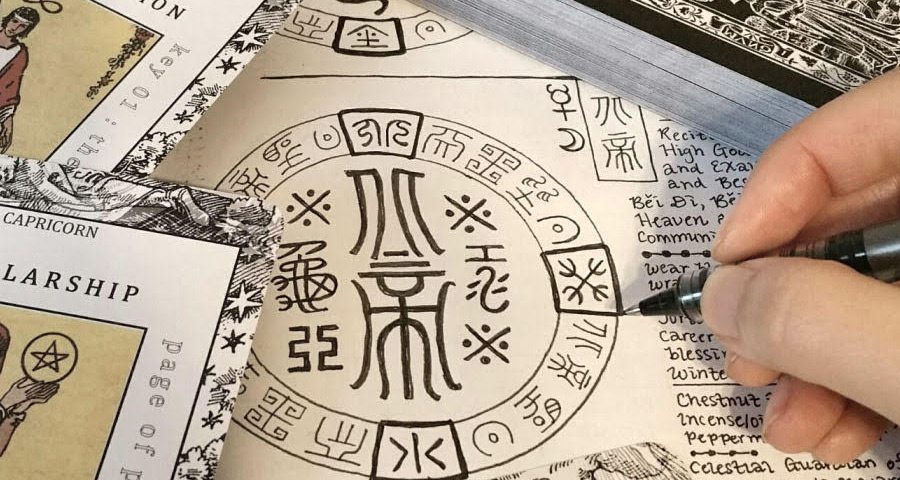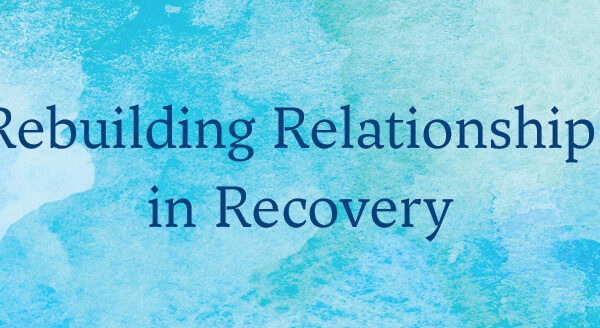
The Tao of Craft: What is a Fu Talisman?
Categories: Excerpt Metaphysics & Unexplained Phenomena New Release Spirituality & Religion
In her book The Tao of Craft, metaphysics powerhouse Benebell Wen (Holistic Tarot, 2016) provides an in-depth look at the history, methods, and applications of Fu talismans, making this ancient esoteric practice available for the first time in English. Whether you’re looking for health, wealth, happiness, or personal empowerment, Wen will lead you through step by step in her comprehensive, deeply researched guide. But, first: what is a fu talisman? And what can it do? Wen explains, below, in an excerpt from The Tao of Craft:
What is a Fu Talisman?
A Fu talisman [1] is an ideograph that represents an intention. It consists of both drawings and writing, sometimes legible, but oftentimes not. The ideographs represent a systematic language or code that is used to facilitate communication between Heaven, Earth, and Man. Then, through craft, or ceremonial rituals, a practitioner accumulates Qi energy from sources in the environment and channels it in concentrated form into the Fu talisman, in effect using the practitioner’s force to transmute the properties of that object, the Fu.
Metaphysical energy can be harnessed and transmuted to empower, amplify, strengthen, weaken, dispel, or block other metaphysical energy. In short, that is the purpose of a Fu—to tap into metaphysical energy in a way that can rectify perceived imbalances in the physical or material plane. Esoteric Taoist practitioners believe that is how luck can be changed—that is how the direction of physical manifestations can be altered. The Fu talisman works with the Qi in the practitioner’s environment. Such energy is present everywhere, in everything that you see, be it a tree, thunder, a piece of crystal quartz, a bowl of rainwater, or emotions such as love and anger. That unseen energy increases in potency when two people fall in love or make love, when we hate or feel extreme jealousy, or when there is a large congregation of people gathered for a shared and unified purpose.
The crafting of a Fu talisman in effect redistributes the balances between the yin and yang of Qi energy, and in doing so, can better attract career, wealth, or romantic opportunities. Fu talismans can be used to strengthen or weaken certain personality characteristics. The craft of a Fu consists of pulling desirable metaphysical energy and channeling that energy into a concentrated space so that it might help to modify existing energies in that given space. Thus, a Fu for wealth is essentially a concentrated knot of Qi energy that is calibrated by a practitioner and keyed to rendering an environment more amenable to wealth-generating opportunities. If a Fu is crafted to ease emotional tensions in a domestic environment, such a talisman is a concentrated knot of energy that will weaken aggression and strengthen compassion, love, and gentility.
The craft of Fu is a form of alchemy that works with unseen metaphysical energy. It is the transmutation of that energy, of Qi. As the father of nuclear physics Ernest Rutherford discovered in 1919, channeling high-speed alpha particles through a vessel can transform one kind of atom into another [2]. That transmutation of elements was the core undertaking of medieval alchemists, which Rutherford proved centuries later. While to date there is no known scientific explanation for craft, I am convinced that in time, craft and the transmutation of unseen metaphysical energy can and will be understood through quantum mechanics. The unseen metaphysical Qi energy I speak of might be likened to the unseen neutrons that surround us every day, every moment, in our immediate vicinity. While we are all surrounded by them, scientists did not become aware of their existence until 1932 [3]. I trust that likewise, in time, modern scientists will finally catch up to what practitioners of craft have known all along.
A Preliminary Note of Caution
I once listened in on a lecture by the venerable Sheng-Yen, a Buddhist monk, teacher, and scholar, who spoke about magic and sorcery [4], or as I refer to it, energetic workings beyond the physical realm [5]. He warned against reliance on energetic workings, such as magical practice, to help ourselves or even with the good intention of helping others. Those with the ability to work with such energies and who also possess divine wisdom will rarely use their abilities, and there is a reason for that. They understand that there is no enduring benefit.
He gave the example of a one-way romance. Say you want someone to marry you, but that person is not yet ready to consent to such a proposition. If you use energetic workings, like a magical spell, to get that person to marry you, then you have engaged in an act of deception. Aside from the matter of having acted deceptively, the greater problem is the debt you have incurred. In energetic workings such as magic, you are borrowing something that is not yours. At some point you will have to return it, with interest compounded, energetic interest on top of interest. You have to ask yourself: in the end, was it worth borrowing that little amount of energy?The intent to use energetic workings beyond the physical realm to help others is commendable, but such good intentions can quickly run amok. The laws of cause and effect still apply. Figuratively, to use such workings to fill a hole for someone, you need to get the filler from elsewhere. In getting that filler, all you have done is create another hole somewhere else, a hole that perhaps you do not see, to patch the hole that you currently see. Where is the sense in that?
Also, there may be a greater karmic rationale at play for why that person incurred such a hole in the first place. You should not interfere with that karma, at least not without a complete understanding of that path, of your own path, and what could result from the interference. Using something like magic violates people’s karmic paths. While trapped in the tempest of suffering, people forget the necessity of pain. Pain is part of the hero’s journey to greatness, and both that pain and greatness could be part of someone’s karmic path. Not allowing that person to suffer the necessary pain could be derailing him from the hero’s journey. So always take care in how you proceed in energetic workings.
Yet there is a curious “stand your ground” principle among many esoteric Taoist practitioners [6]. Today, in the way craft is practiced, there seems to be a tacit agreement that energetic workings for the protection and defense of self is permissible, and retaliating against those who hurt us or threaten to hurt us, or assisting others with doing so, is part of the practitioner’s work [7].
That runs contrary to exoteric Taoist philosophy in a significant way. Exoteric Taoist philosophy teaches wu wei, to act in response to oppositional forces by not acting at all. Thus, while the venerable Sheng-Yen was speaking from a Chan Buddhist perspective, what the monk had to say about magic is aligned with the Taoist principle of wu wei. Taoist philosophy teaches to defend softly against another’s hard offense. Wu wei is about cultivating the practitioner’s mind and body to be like water, absorbing offenses without being harmed by offenses.
The highest echelons of defensive work is about attaining such power and indestructibility of mind and body that any offensive attack is like an ant tickling the tip of your toe, and you do not retaliate against that ant because you show compassion and unconditional love for all. At the most advanced stage of cultivation, a practitioner of esoteric Taoism will reach the state of wu wei espoused in exoteric Taoism. Crafting Fu sigils is a form of energetic working that should not be used lightly to help yourself or others. It is a curious practice to learn about and train in, but do not engage in it without wisdom. Teaching wisdom, regretfully, is beyond the scope of this book.
References
1. Fu (符) is a noun. The Fu is the talisman or sigil in question. Therefore, to say “Fu talisman” or “Fu sigil” is to state the same noun redundantly. However, for the benefit of Western practitioners, I have done just that, stating the noun twice, once in its Chinese terminology and again in English, to assist the understanding of the Western practitioner.
2. Victor Guillemin, The Story of Quantum Mechanics (Mineola, NY: Courier, 1968), 120–21.
4. A recording of the complete lecture is available online: Great Dharma Drum, Supernatural Power and Its Impact on Society (GDD-7, Master Sheng Yen), video file, May 7, 2012, https:// youtu.be/KKqmPSToWUU.
5. “Magic is a field where intensive and creative study may show that many so-called supernatural powers are in fact reflections of hitherto little-understood forces, which may very well possibly be harnessed to individual and collective advantage.” Shah, Oriental Magic, xvii.
6. The contemporary practice of craft in East Asia, especially among Taoist practitioners, often involves retaliatory craft or magic. See, for example, Min Tzu, Chinese Taoist Sorcery: 00i-xxii_001-594_TaoofCraft.indd 527 6/24/16 1:08 PM 528 NOTES The Art of Getting Even (San Francisco: Vision Press Films, 2000).
7. However, generalizations cannot be made about what Taoist practitioners believe or do not believe. Fourth- and fifth-century texts on esoteric Taoism suggests that true transcendental magic cannot be used to kill others, even if it is to save one’s own life; steal from others, even if it is to provide for oneself; act in a prideful manner; engage in material and superficial excesses; or indulge in vanity. See, for example, 三洞珠囊 [Sān Dòng Zhū Náng, Three Caverns of the Pearl Theca], http://baike.baidu.com/view/343215.htm. These scriptures have also been translated into English as “A Bag of Pearls from the Three Caverns” or “Pearl Satchel of the Three Caverns.” The text is believed to have been written around the time of the Tang Dynasty (AD 618–907). The concept of nonharm and forbearance from retaliation in magic or Taoist craft predates the Tang Dynasty, however, and can be found in the works of Ge Hong. In the Writ of the Three Sovereigns, written around AD 437, over a century after Ge Hong’s Bao Puzi, acts such as self-defense, or killing to save one’s own life, stealing in an attempt to provide for oneself, falsely advertising one’s own abilities, no matter the intent, or indulging in materialism will bar a practitioner from achieving immortality. See Dominic Emanuel Steavu-Balint, “The Three Sovereigns Tradition: Talismans, Elixirs, and Meditation in Early Medieval China” (doctoral dissertation, Stanford University, 2010), 26, http://searchworks .stanford.edu/view/8572529/




